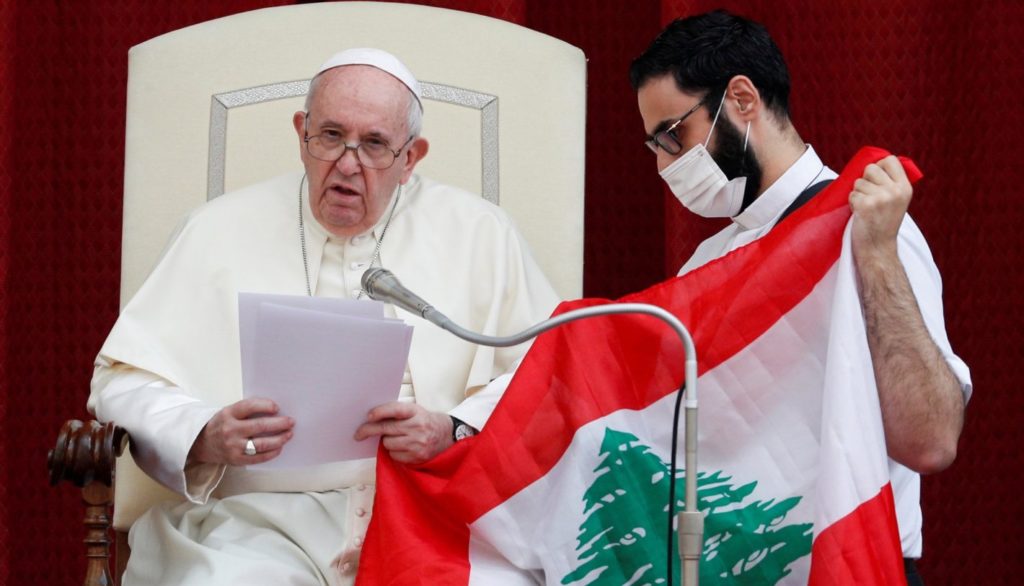The "Land of the Cedars" continues to be the center of attention of the universal Church and, in particular, of the Bishop of Rome. On July 1, in fact, the Pope will organize at the Vatican a day of reflection and prayer for Lebanon, with the participation of the principal leaders of the Christian communities present in the country. The event is entitled "Together for Lebanon"and has as its motto the passage from Jeremiah 29:11: "The Lord God has plans for peace".
The local
Just last September 8, one month after the violent explosion In the Beirut port area in which more than two hundred people lost their lives, causing some 300,000 displaced persons, Pope Francis sent his representative on the spot, Cardinal Secretary of State Pietro Parolin, for a universal day of prayer and fasting for Lebanon.
He himself had convoked it at the end of the General Audience of the previous Wednesday, as a gesture of closeness and solidarity, but also as a concrete presence to "accompany the population" especially tried and tested. On that occasion, the Holy Father made his own the words that St. John Paul II wrote in the Apostolic Letter "A New Hope for Lebanon", sent to the Lebanese Church in September 1989: "In the face of the repeated dramas, which every inhabitant of this land knows, we become aware of the extreme danger that threatens the very existence of the country. Lebanon cannot be abandoned in its solitude".
He then added: "I encourage all Lebanese to continue to hope and to find the strength and energy to start again. I call on politicians and religious leaders to engage with sincerity and transparency in the work of reconstruction, putting aside partisan interests and looking to the common good and the future of the nation."
Today, nine months after Parolin's visit to the Maronite Cathedral of St. George for the meeting with religious leaders, the appointment is renewed directly at the Vatican.
Prayer
The heads of the respective Churches and Ecclesial Communities of Lebanon will meet in Rome, bringing "the cry of a people", as Cardinal Leonardo Sandri, Prefect of the Congregation for Oriental Churches, underlined at the press conference to present the initiative.
The program includes a first meeting with the Holy Father on the morning of July 1, directly at Casa Santa Marta, where the various religious representatives will be guests since June 30. This will be followed by a visit to St. Peter's Basilica for a brief moment of prayer at the tomb of the Apostle.
The meetings
At three different times during the day, there will be working sessions, each introduced by a speaker, in the Clementine Hall of the Apostolic Palace. The meeting table will be round and will include, in addition to the Holy Father, the Apostolic Nuncio to Lebanon, Bishop Joseph Spiteri, who will act as moderator, and the ten heads of the Christian communities.
On the Catholic side, the Maronite Patriarch Card. Bechara Boutros Raï, Syro-Catholic Patriarch Ignace Youssef III Younan, Melkite Patriarch Youssef Absi, Chaldean Bishop Michel Kassarj and Latin Apostolic Vicar Monsignor Cesar Essayan.
The non-Catholic Churches present will instead be the Greek Orthodox of the Patriarchate of Antioch, of Byzantine tradition, led by Patriarch Youhanna X Yazigi; the Catholicosate of the Armenian Apostolic Church of Cilicia, led by Catholicos Aram I; the Syrian Orthodox Church, headed since 2014 by Patriarch Ignatius Aphrem II; and the Supreme Council of the Evangelical Community, represented by its President Joseph Kassabhas.
At the end of the day, a closing prayer is scheduled in St. Peter's Basilica, in the presence of the Diplomatic Corps accredited to the Holy See and open to the Lebanese religious communities and the lay faithful present in Rome. Some young people will present the Christian leaders with a lighted lamp as a sign of peace, which will then be placed on a candelabra. The closing remarks will be given by Pope Francis, who will also donate to those present a tile with the logo of the day as a souvenir.
The logo
As for the logo, in the center is the figure of the Virgin venerated on the hill of Harissa with the title "Our Lady of Lebanon" with her hands open towards the Mediterranean Sea and the capital Beirut, as a sign of welcoming the hopes not only of Maronite Christians but also of Orthodox and Muslims.
The composition also shows the stylized Lebanese cedar, the red color of the Lebanese flag also as a reminder of the blood shed for the unity of the people, and the sun, as a symbol of hope towards a dawn of peace for all.









